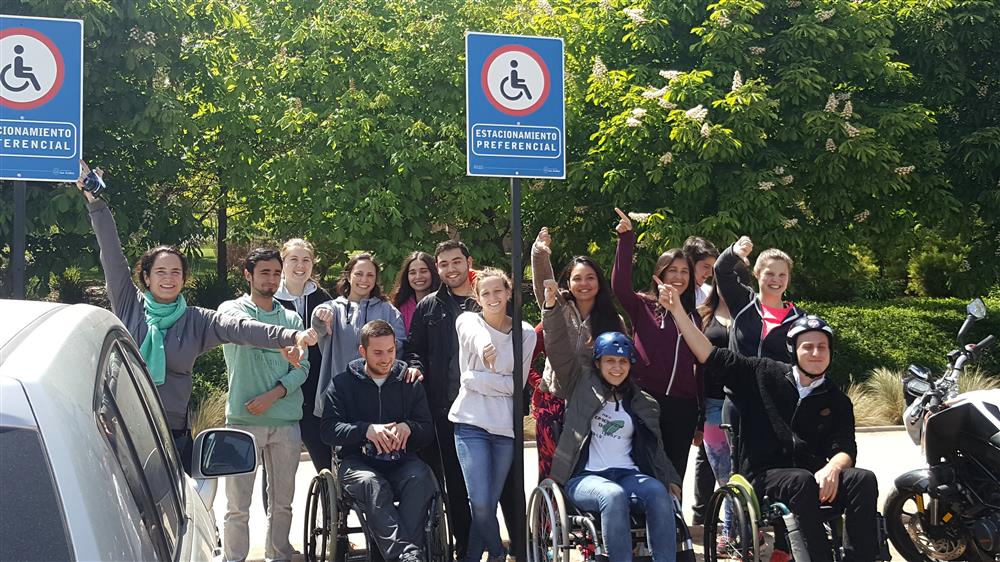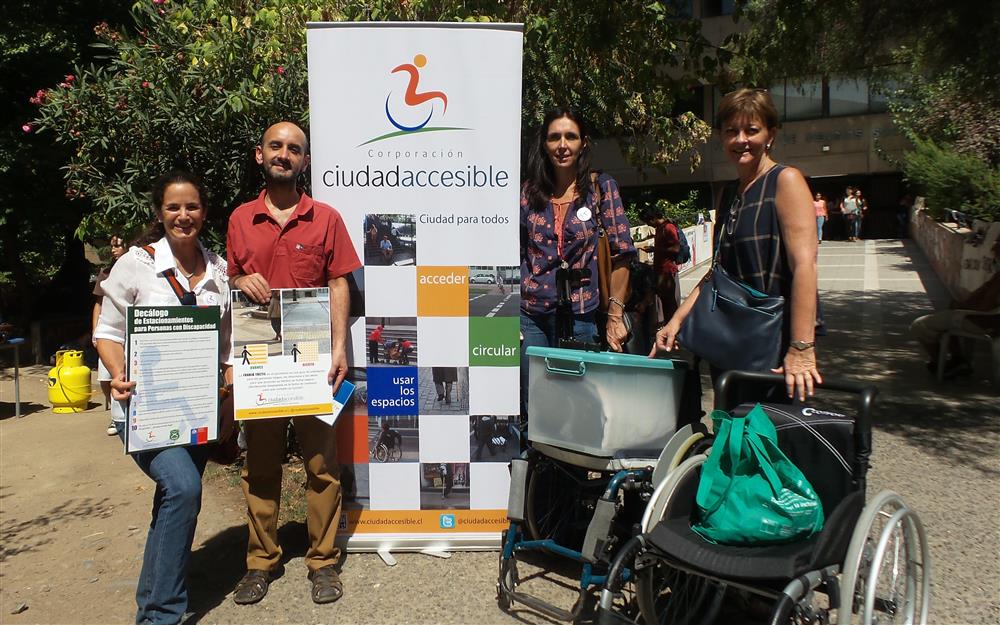Planning and building accessible cities, simplified
- Solution
- Graphic Accessibility Guides
- Organization
- Corporación Ciudad Accesible
- Country of Implementation
- Chile
- Region
- Latin America & Caribbean
- Subregion
- South America
- City
- Argentina, Bolivia, Peru
- Start Year
- 2002
- First published
- 31.01.2018

Solution details
People
“Fifteen years ago when we built our house and wanted it to be accessible to our daughter, who is a wheelchair user, it was with the help of CCA that were we able to overcome architectural barriers.” Claudia Riquelme, architect and specialist in accessibility
Corporacion Ciudad Accesible (CCA), an NGO founded in 2000 and based in Santiago de Chile, works to promote a city and spaces, where universal accessibility could bring autonomy to people with disabilities.. In 2002 the organization began to publish graphic accessibility guides in the form of leaflets called “Accessible Thematic Files.” By 2017, 13 Accessible Thematic Files have been published and are available as free downloads, supporting municipalities, planning institutions, and the public with the aim of accelerating the planning of accessible environments, buildings, and towns. The website has approximately 60,000 visitors per year.
Problems Targeted
Architects and designers, as well as users such as persons with disabilities and their families, do not have direct access to such tools as diagrams and illustrations that would enable them to adapt to or construct accessible environments. Further, available information on accessible building is often incomprehensible to the non-professional.
Solution, Innovation and Impact
The Accessible Thematic Files are intended to bring current national standards and Universal Design topics for outdoor and built environments closer to everyone – both professionals and non-professionals – so that the accessibility measures in buildings and environments become more efficient. The files cover 13 topics, such as public places and parks, sports facilities, tourism facilities, pedestrians, etc. These guides simplify the existing and sometimes complicated building regulations, and work with pictures, pictograms, and illustrations to make information more accessible. CCA distributes the Accessible Thematic Files in the form of leaflets or they can be downloaded free of charge. On average the website has 60,000 visitors each year. In Chile, the distribution of the Accessible Thematic Files have contributed to the introduction of specific laws on accessibility and the construction of better quality pavements and pedestrian crossings in municipalities, and have encouraged tourism companies to implement accessible tours and infrastructure.
Funding, Outlook and Transferability
To reach more people, in 2015 the Accessible Thematic Files were compiled in the form of an updated and simplified version. They are available for downloading and reach around 5,000 visitors each month, some of which seek permission to redistribute them. The materials are also used in other Latin American countries, such as Argentina, Bolivia, and Peru. The practice is very cost-efficient, as the digital format does not generate any costs beyond the maintenance of the website. CCA is funded through consulting projects for privately owned companies or institutions that want to implement the accessibility guidelines. These companies/institutions pay for workshops, seminars, examination of infrastructure, consulting, and reports.
Media
Life Story
THE STORY OF BERNADITA SANTA CRUZ, DESIGNER AND ENTREPRENEUR
“I could again move in my own house, and I will apply it to other spaces in the future.”
I am Bernardita Santa Cruz, a 26-year-old designer and founder of the shoe brand Mibe. I am also a painter and ceramist who has a busy life among my friends and family. In October 2016 I had an accident, and as a consequence I have become paraplegic. At that point I had to begin to know my body in this new condition; and in spite of the pain, I have been learning again to move, sit, dress, and drive. I work every day to overcome my physical limitations. However, I have often discovered that the barriers I face are not caused by my physical problems, but that instead they are caused by my environment. The first barriers I encountered were inside my own house: I could not move from one place to another because there was unevenness in the interior (between corridors and living areas) and impediments in the exterior (e.g., accesses and terraces). Further, my bedroom and bathroom were incompatible with use by a person in a wheelchair. Even before I returned to my home after the accident, my parents realized that they had to make changes so that I could be as autonomous as possible. To that end, the assistance of Corporation Ciudad Accesible has been vital. The renovation of our home was based on its accessibility guides and manuals, which provided us with specific measurements, support materials, distribution ideas, etc. And these materials will also allow me to prepare other spaces wherever I move in the future.
Related information
- Connections
- 2
-
Organization
- People
